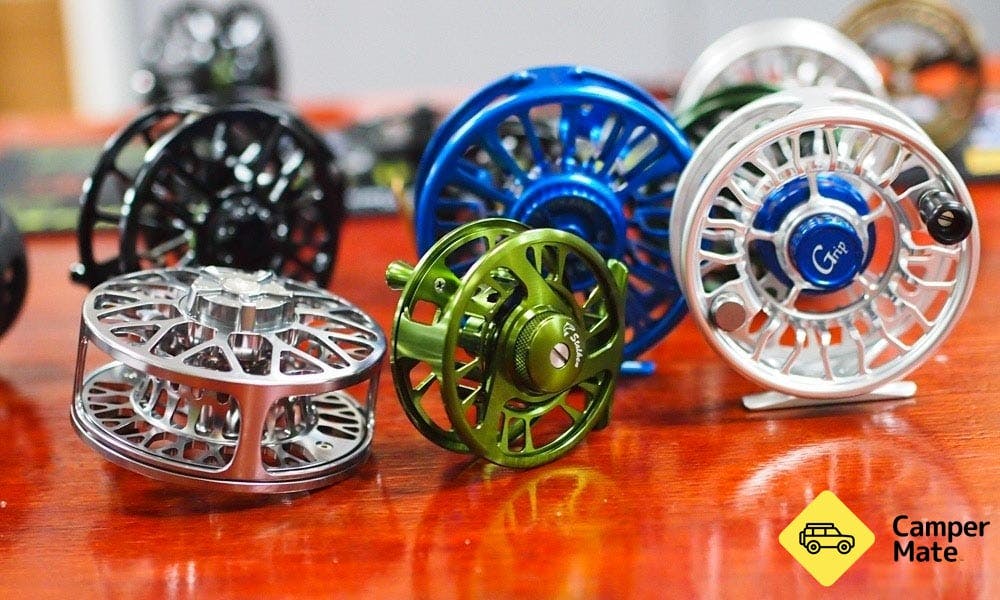
Fishing
Your Guide to Choosing a Fly Fishing Reel
September 19, 2017 • jacob
10 min read
Choosing a fly fishing reel can be a little bewildering for a first-timer. There is a range of variables to consider including size, price, material and water resistance.
If you've started to look at which reel would best suit your fly fishing outfit, you probably have a basic understanding of how they work. If not, check out our Beginners’ Guide for a detailed introduction.
Before you go out and buy a reel, it’s a good idea to get a clear understanding of what’s out there and what you can expect to get for your money. Stuart Heron of Hurley’s Fly Fishingis practically a walking encyclopaedia when it comes to these things so we asked him to give us a rundown on how to choose a fly reel.
The range
Firstly, it’s worth getting familiar with the different levels of quality available and how they impact a reel’s performance.
Plastic/graphite composites
“At the basic end of the range, reels are made from plastic/graphite composites and are usually priced between $30 and $50. Many manufacturers include composite reels as part of starter (rod and reel) kits in the $100 to $200 price range.
“These reels usually come fully set-up with line and everything, which is perfect for absolute beginners – people who don't want options, who just want something to pick up and go with,” says Heron.
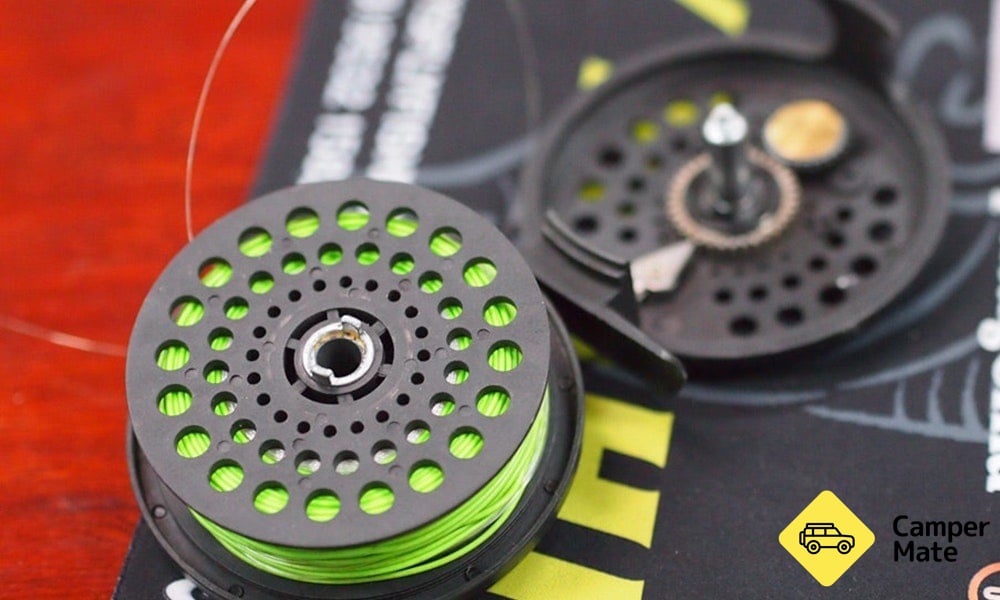
Beginner reels often come fully set up
According to Stuart, these entry level reels are smooth and light enough but they’re not the kind of thing that can be expected to last a long time. Their drag systems are often unhoused, similar to reels designed 30 to 40 years ago, allowing dust, sand and the like to interfere with the inner workings of the reel. However, if you’ve never been fly fishing and just want to get out on the water and give it a go, these could be an option.
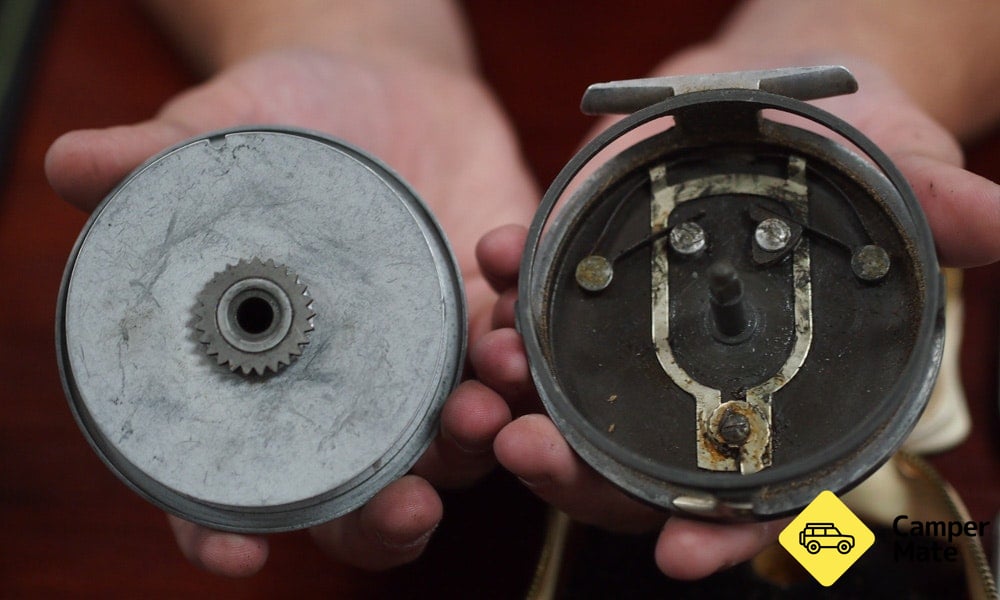
An old-fashioned reel with an unhoused drag system
Die cast aluminium
Price-wise, the next jump up isn’t a big one. For around $60 to $70 you can get yourself a die cast aluminium reel. These have a similar design to the composite reels but use a housed drag system so all the small moving parts are protected. They slide together easily and are a lot smoother, stronger and longer-lasting than cheaper reels. However, the bearings in these reels are in an open housing so sand and grit can find its way in there if you’re not careful.
“I started out with this kind of reel about 15 years ago and mine is still going today. They're really cool reels and, as long as you don't abuse them, they will last forever.
“They're a die cast aluminium, so it's pretty much old cans melted down and poured into a mould. They're your workhorse reel – if you don't want to spend too much on a reel but you want a nice rod, that's what you go for,” says Heron.
If you drop and bend one of the arms or the spool of a die cast reel, you should be able to bend it back into place because the metal is quite soft. The problem is, this weakens it substantially and it can end up snapping. Dropping the reel hard enough to do that sort of damage is unlikely but worth being aware of.
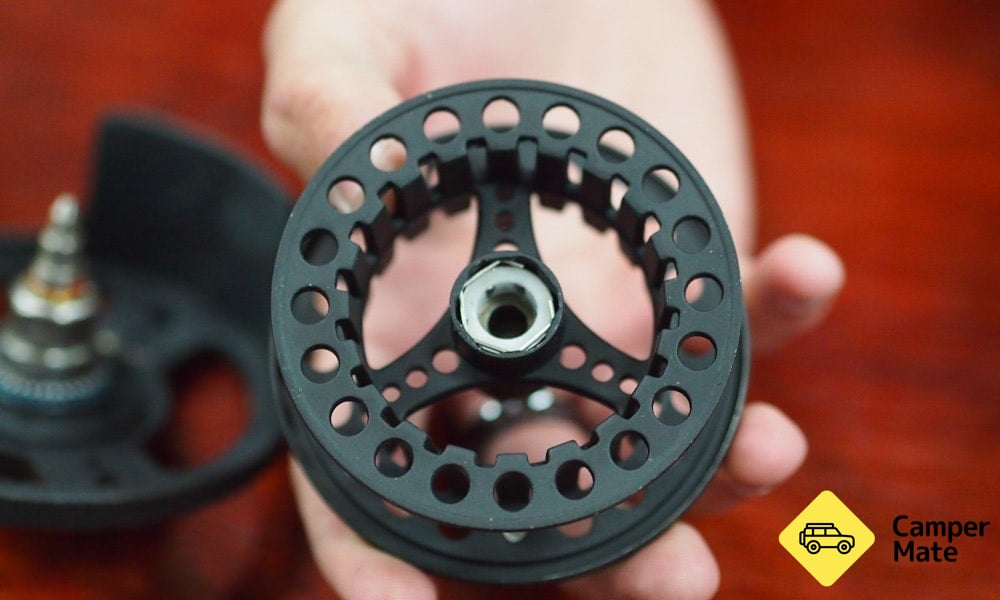
Bearings are often held in with a clip, in die cast aluminium reels
Machined aluminium
At around $150 minimum, machined aluminium reels are over double the price of their die cast counterparts.
“The difference is, die cast reels are poured into a mould whereas machined alloy reels are made from a block of aircraft grade aluminium. They are cut out using machining tools to make a really nice, strong and lightweight reel.
“Machined reels use a twist-in system for their one-way bearings which makes them more secure than die cast reels which just use a little clip to hold their bearings and drags in place.”
Because machined aluminium is much stronger than die cast, if bent, these reels can be pushed back into shape without causing structural damage to the reel.
At the cheaper end of the machined alloy range are the basic, Chinese-made reels. These are usually very smooth and well made. Unlike more expensive models, they don’t have a water resistant drag system (we’ll explain the benefits of this shortly) but they are still a much better-housed system than cheaper reels.
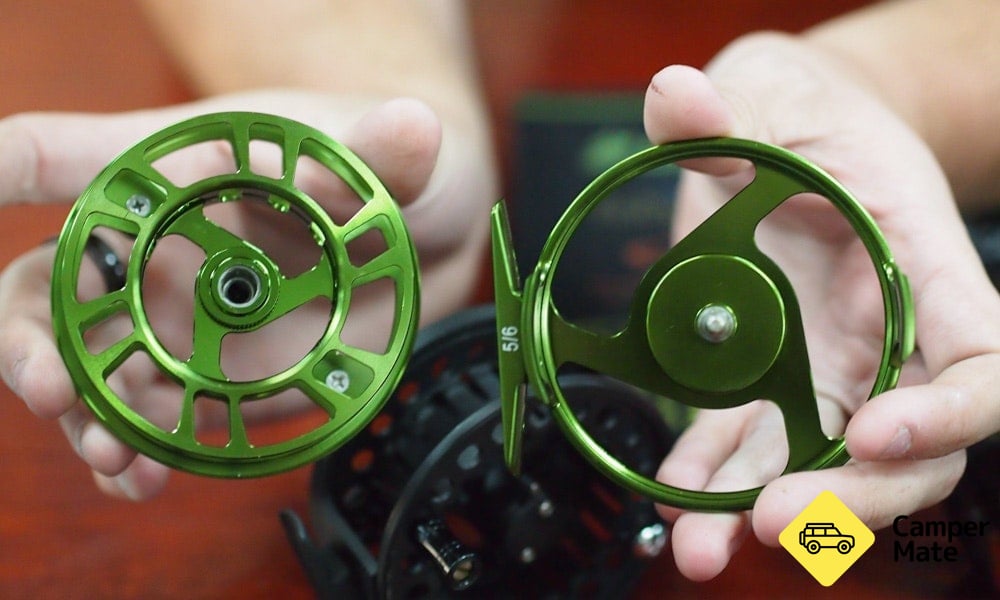
A Chinese made, machined aluminium fly reel with housed drag
Clicker systems
Clicker systems are a feature some reels will have as you go up through the machined alloy range.
“Most reels will have one smooth winding direction (line in) and one clicker winding direction (line out). The benefits of going for a double clicker are that they only take up a tiny bit of line every time you flick forward. Smooth winding reels can actually end up winding up the line as you're casting. So if you strip out the perfect amount of line and you go to do a big cast, your reel can spin and strip up line – a clicker will stop that happening for the most part.”
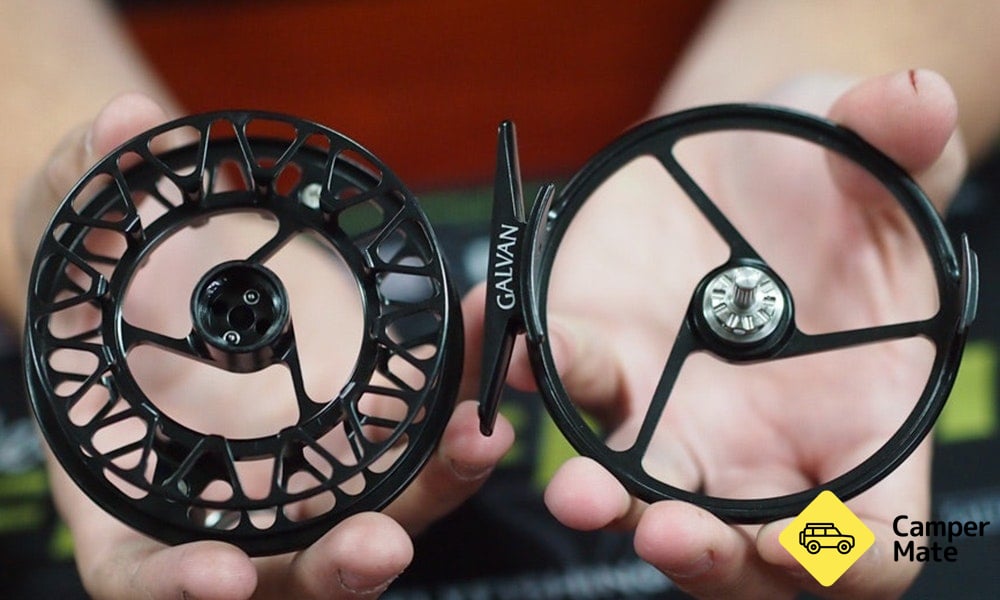
Galvan machined aluminium fly reel with clicker system
Water resistance
If you’re planning to fish in saltwater, it’s important to consider a water resistant reel. Salt can damage the small moving parts of a reel like the bearings and drag system and water resistant reels will have these components sealed in waterproof housing or under an o-ring (in cheaper models).
“Water resistant, Chinese made machined alloy reels start at about $200. From there you can go up to something like a Stalker HSD which is still made in China but uses much stronger housing and spool, for $250.
“$250 is a lot to spend on a reel, but it is something that you can use in both fresh and saltwater and it's going to last you a lot longer than a $200 reel,” says Heron.
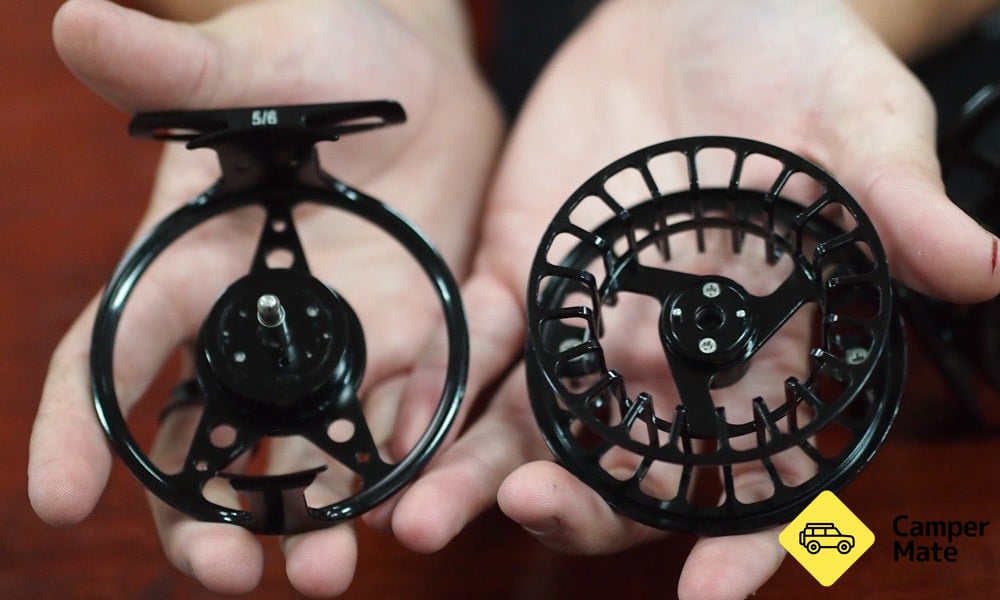
The Stalker, HSD Glide is Chinese made, with a water resistant drag
American made
If you’re looking for something really sweet, check out American made reels by brands like Galvan and Nautilus.
“Galvan reels use ceramic housings and carbon fibre disc drags so they're a lot tougher, and also much simpler systems. The size of the spindle is a lot bigger, compared to other waterproof machined alloy reels. And while you’re pretty unlikely to break the lighter ones, having a beefier spindle means you can go and chase big fish like tuna,” says Heron.
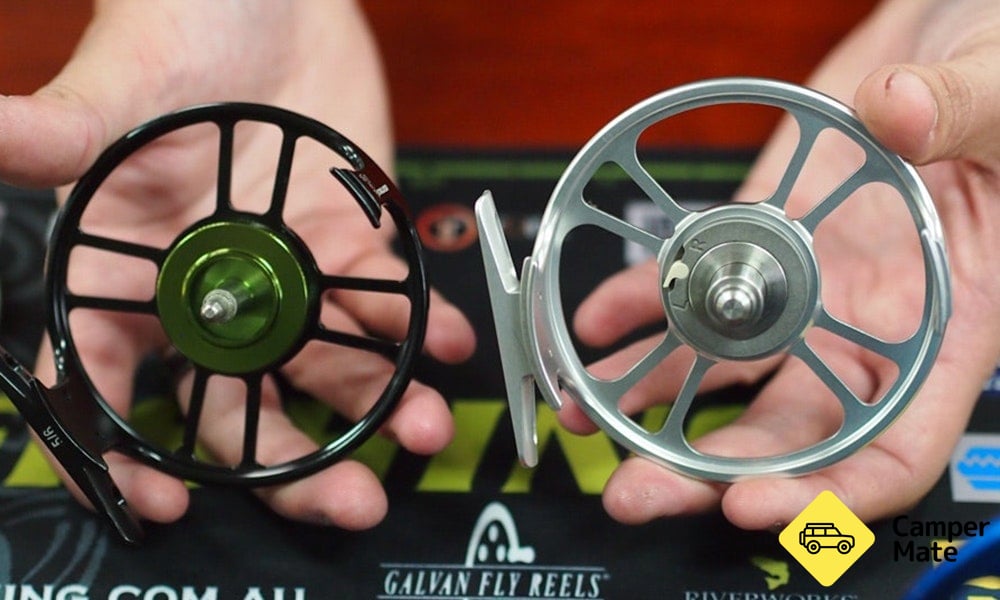
American reels often have thicker spindles than their Chinese counterparts
“Another cool thing about the Galvans or any high-end, American made reel is they come with a lifetime warranty. It's the kind of thing that you'll buy when you're 30 years old and you'll pass down to your kids when they're getting into it - which is awesome.
“They're all fully waterproof, smooth as anything, tough as guts and they come in a few different levels like the machined alloys – we go and chase trout, right through to tuna and sailfish on them.”
Waterproof Galvan reels start at around the $300-$350 mark for smaller sizes, and are usually over $400 for larger sizes.
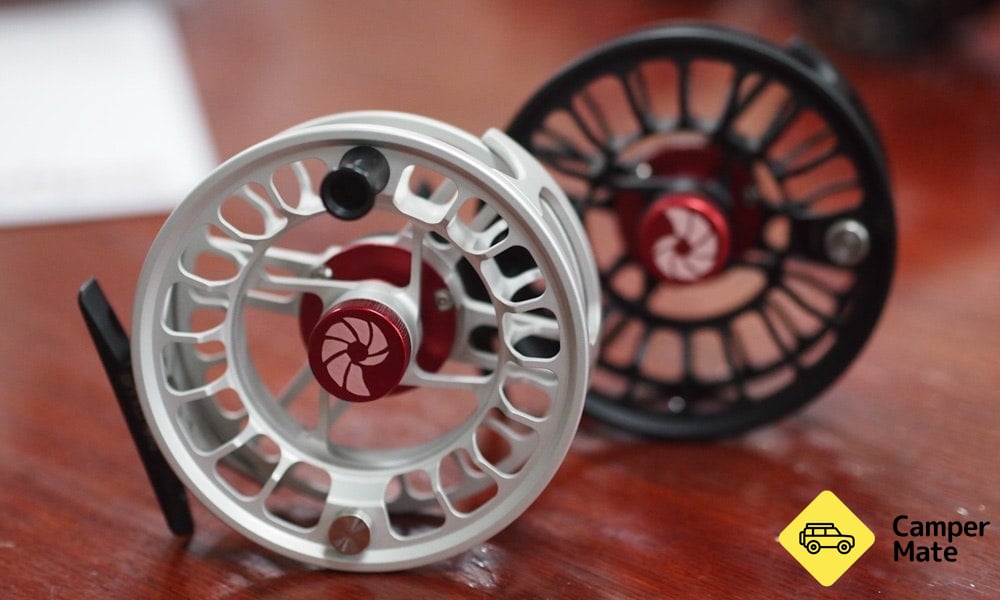
Nautilus American made fly reels
Selection
When looking to buy a reel, Heron suggests staying away from the cheapest quality unless you only want something you can do that one trip with.
“As a minimum, spend $70 on a reel – it isn't a hell of a lot and you'll get something that'll last you up to 15 years with normal use. If you're planning on doing hard fishing every day, jump up to the machined alloy from the $150 to $250 mark and that's going to last you a lot longer and perform a lot better.
“China puts out some awesome gear nowadays. We've been selling rods and reels for about 20 years and in the last four to five years, we've noticed a massive change. It’s now much stronger, nicer gear – something we can sell to someone and know that it's going to last them and it's going to do the job that any of these American ones will do. The only thing is it may not do it as well for as long.”
Weight
It’s important to match the weight of your line to the reel. Most reels will have a range of two or three weights and they’ll be suitable for line within that range.
“Be wary of reels with too big a weight range. If a reel that says it's a four to eight weight, (there's a huge variation in size between those weights) that's a manufacturer who's just trying to sell one reel to cover everything – and it's not going to suit the job.”
For a more detailed explanation of line weights, check out our Fly Fishing for Beginnersguide.
Arbour size
“This is another thing to look for when buying a reel. A small arbour is very thin in the middle of the spool whereas a large arbour is fatter in the middle. In the old days, reels were designed with small arbours that sat close to the spindle to give the reel more drag,” says Heron.
Nowadays, good reels are designed with larger arbours as this prevents line coil (when stripped out line coils up in loops and tangles).
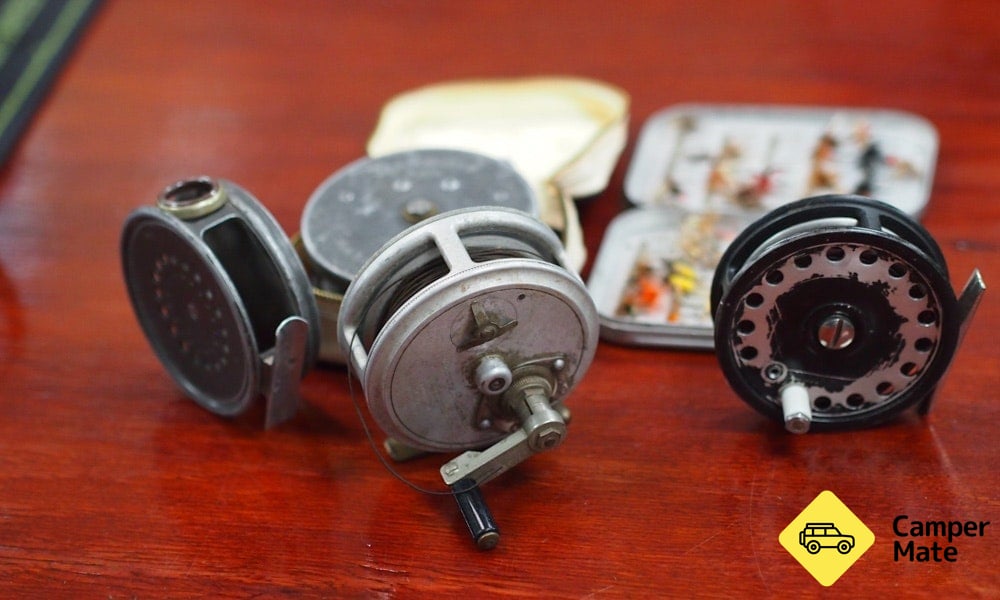
A collection of old-fashioned fly reels
The last word
“Whenever we're selling reels to people we always pull out six or so reels in that size class and explain what each one is going to do compared with the next one. And then we ask where you're going and what you're doing – if you just want to go and chase Australian salmon, something cheap will do but if you're heading over to New Zealand to chase big kingies or you're going up north to chase tarpin, you're going to need something that's a lot tougher,” says Heron.
No matter where you plan to fish, it’s always a good idea to look at a range of options before settling on a reel. Look at where the reel is made, and whether it comes with a lifetime warranty. If you can get the right reel the first time ‘round, you’re going to have a better time out on the water.

